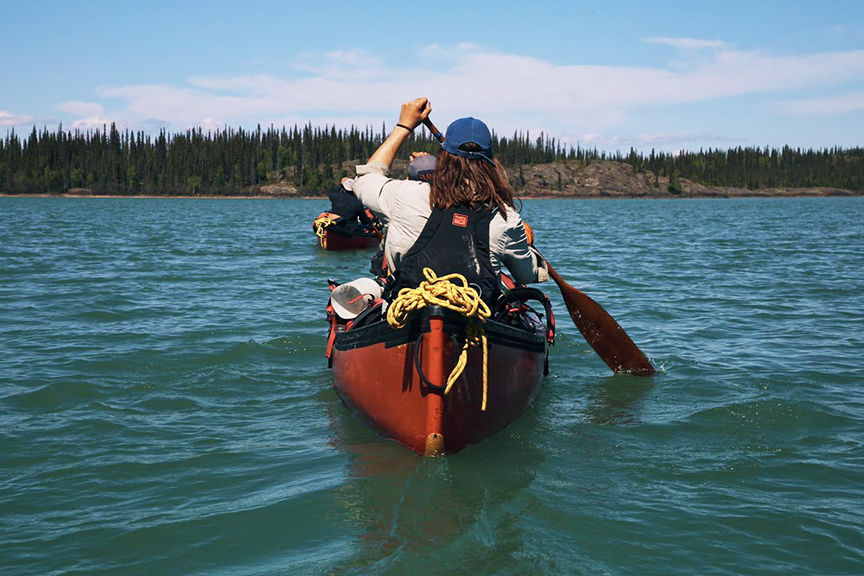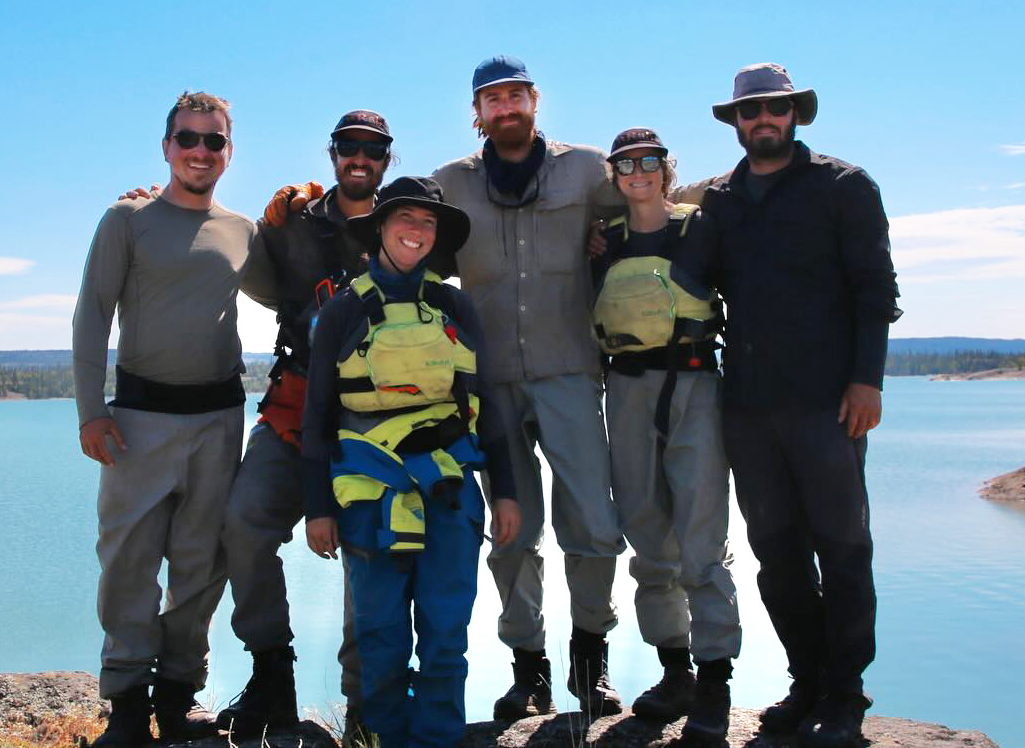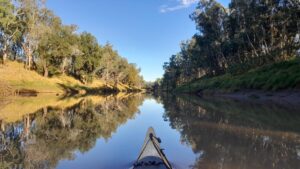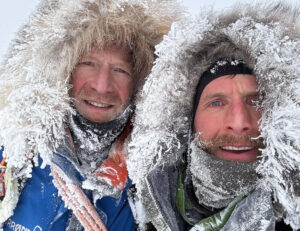After 140 days split between cycling, canoeing, sailing, and hiking, the Canada west-to-east team has finished their 6,900km crossing of Canada’s north.
Nicolas Roulx and Catherine Chagnon set out from Beaver Creek on the Alaska-Yukon border on April 21. They started on bicycles for a 16-day “warm up” as they pedaled east on the Alaska Highway. After a nasty climbing accident shortly after his 2021 Canada north-to-south expedition, Roulx hoped that the relatively relaxed start would help ease him into a long, physical journey.
The ride went smoothly, with “some knee pain, but nothing serious or abnormal,” before the real test began on the wild rivers of the Northwest Territories and Nunavut.

Photo: Expedition AKOR
A battle against the clock
Roulx and Chagnon traded their bicycles for canoes near the entrance to the Little Nahanni River. This juncture marked a couple of key milestones. They would be joined by friends Mathieu Beland and Guillaume Moreau, and their carefully laid plans would require some on-the-fly adjustments.
This was the first team change of the expedition, but not the last. Roulx and Chagnon were due to add Dominic Roulx (Nicolas Roulx’s brother) and Laurence Garceau later in their 2,800km canoe section and eventually joined a completely separate sailing team at Baker Lake. This made for strict time constraints because of the logistical complications involved with different team members joining for various sections. Keeping a few days ahead of schedule was vital.
Thus, arriving at the Little Nahanni River to find it was still frozen threw a spanner in the works. With no time to wait for the river to thaw, they took the “rarely frequented” Flat River to join the Nahanni.
“A rather rough start, the river getting rocky and crowded, quickly gave way to smoother days,” they wrote.
The team put in long days, paddling 10-11 hours and covering around 60km daily to stay on track.
“We didn’t do much research on the Flat River. We paddled it for about a week, and fortunately, it was a little shorter than the Little Nahanni. This gave us a natural time advantage of a few days. We also paddled very, very fast,” Roulx told ExplorersWeb.
Paddling and portaging
From the Flat River, they moved on to the Nahanni. It was a stressful transition. The river was flooded with plenty of sediment and “muddy, ugly water.” Then came the Liard, which empties into the Mackenzie River, where they struggled upstream for roughly 350km. Though a large river, they encountered shallow water and battled headwinds, making for a tough stretch.
Yet despite the route change and some brutal paddling, they managed to stay just ahead of their tight schedule. In fact, their timing was perfect. As they approached Great Slave Lake at the end of the Mackenzie River, there were still big chunks of ice around. “We couldn’t have arrived even a week earlier,” Roulx explained.

The six-person team for the final canoe section. Photo: Expedition AKOR
Soon after, Dominic Roulx and Laurence Garceau joined them on Great Slave Lake for the final canoe section to Baker Lake. The expanded team of six set off from the small community of Lutselk’e on June 25 and almost immediately faced a series of intense portages through a chain of lakes.
This was a theme for the 41-day journey, during which the team racked up 37 portages, moving from boreal forest to tundra and inching east.
Canoe to sailboat
On August 4, they arrived at Baker Lake with time to spare before the next stage of their journey. Here, they left their friends and their canoes behind and joined a sailboat crew.
The sailboat Anorak had just completed a long journey north from Quebec. After a change of crew, they set off again to ferry Roulx and Chagnon to Baffin Island. In theory, the next 2,600km should have been a relative breeze compared to their slog in Canada’s wild interior. But it was not to be.
“The journey from Baker Lake was fierce. From early on, we had to sail in close to 45kmph headwinds right in the middle of Hudson Bay. It was at this moment that Nicolas [Roulx] learned the hard way that he gets seasick,” they wrote in late August. “For us, this was 2,600km of waves, strong winds, staying up to sail 24/7, vomiting, turbulent horizons, dark waters, and soda biscuits to calm the stomach.”

The sailboat. Photo: Laurent Poliquin
After 16 sometimes unpleasant days, the pair were likely relieved to return to dry land and start their final section: eight days hiking from Pangnirtung across the Cumberland Peninsula to the east coast of Baffin Island.
On the afternoon of September 7, they finished a quite remarkable journey.
“Without a welcoming committee, we arrived at the edge of a dizzy cliff-lined fiord just north of the Arctic Circle,” they wrote yesterday. “To go further, we would have to cross the Davis Strait by boat, which would lead us to Greenland. All the lakes, rivers, waters, and mountains we’ve traversed through the Yukon, Northwest Territories, and Nunavut have been occupied by the First Peoples for millennia. The words that we think are the most relevant to utter right now are those of our gratitude.”






